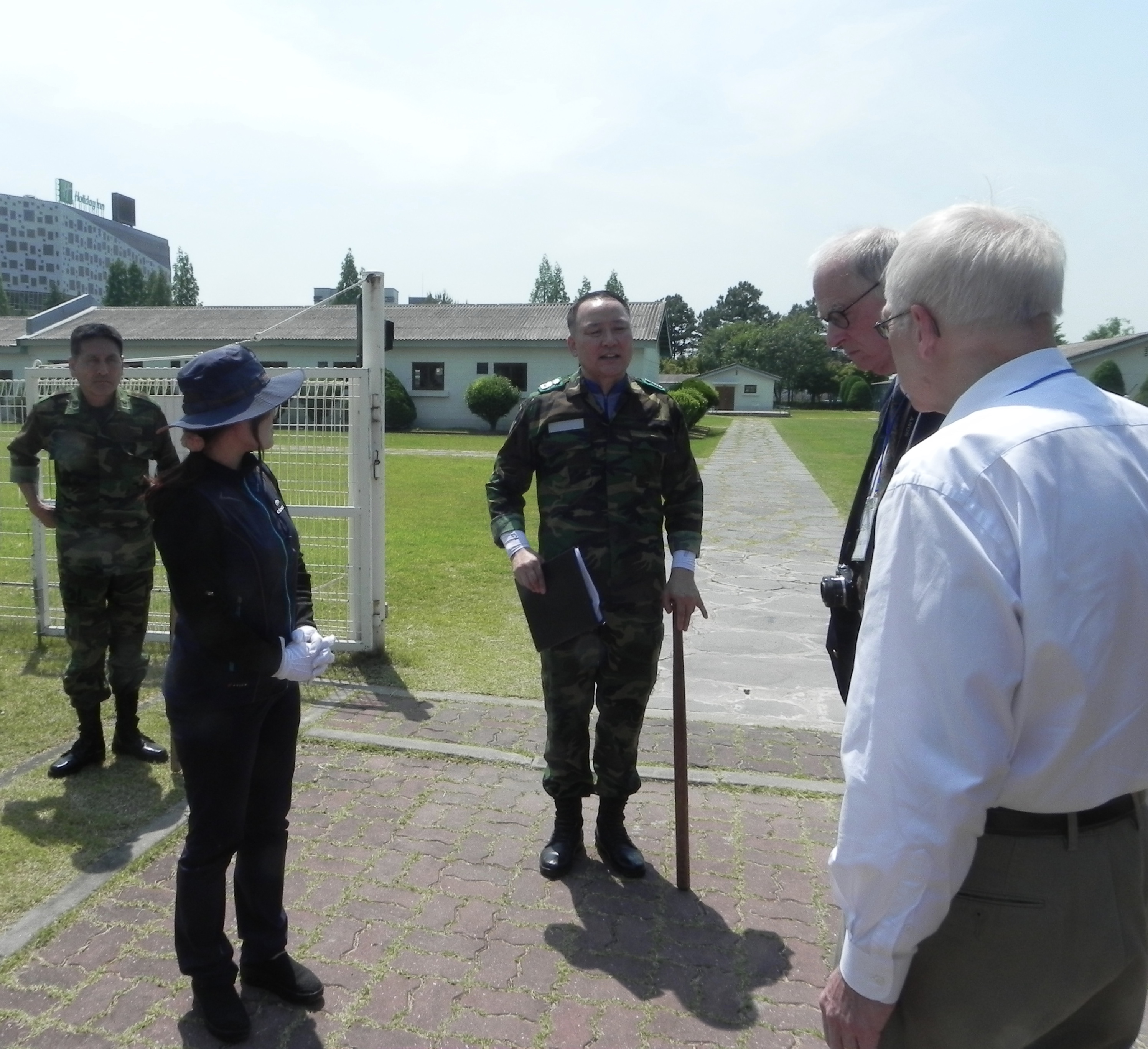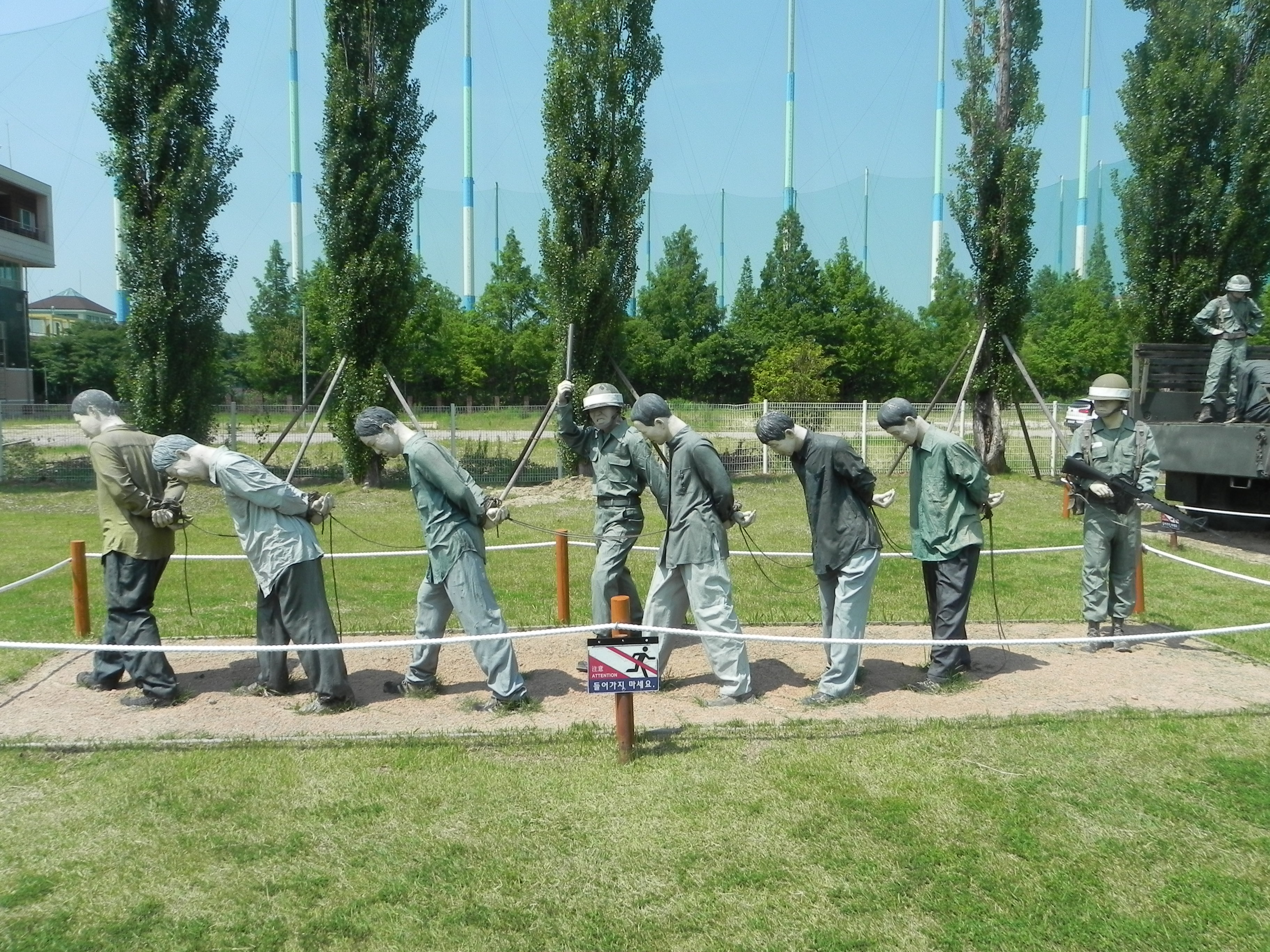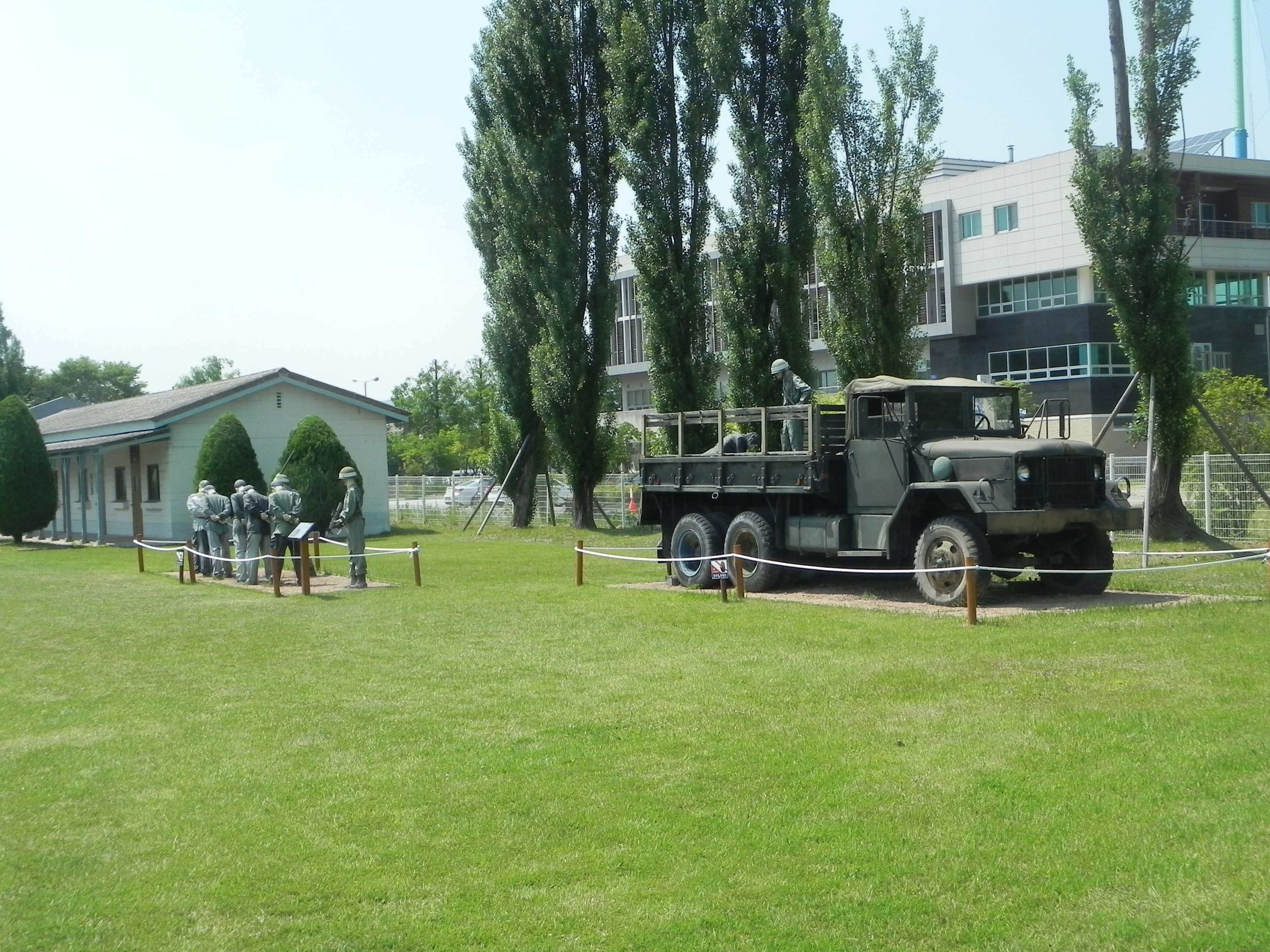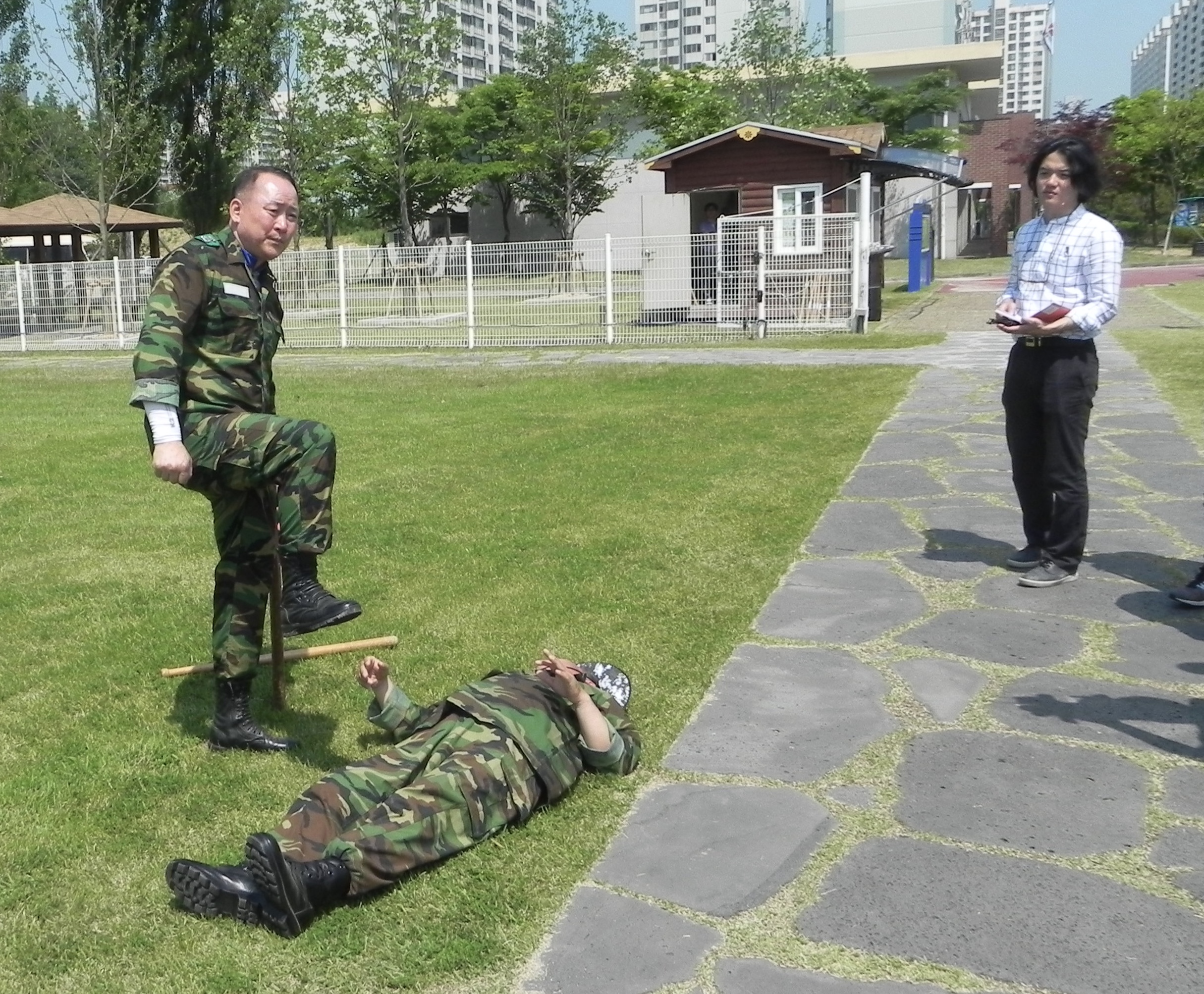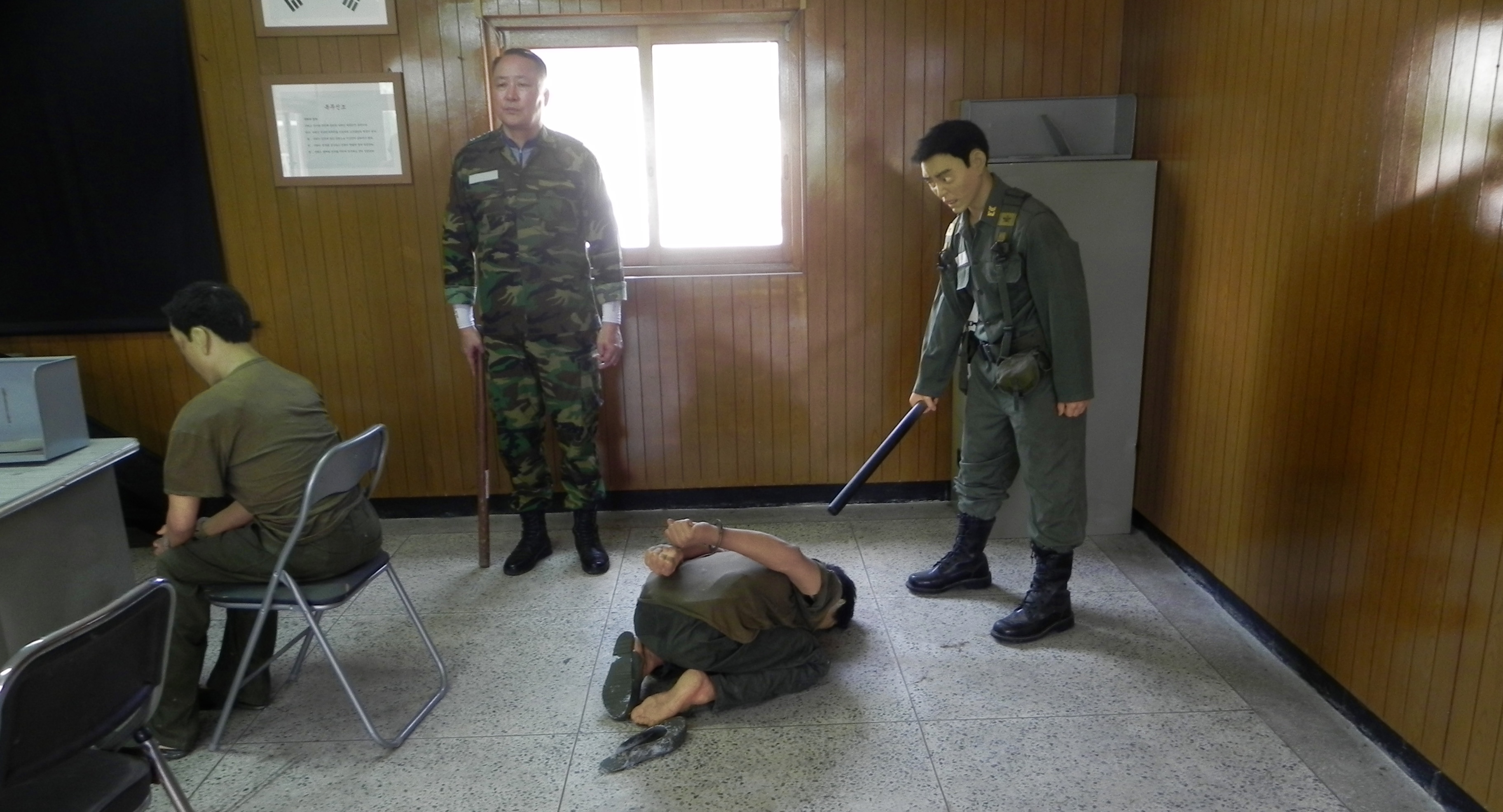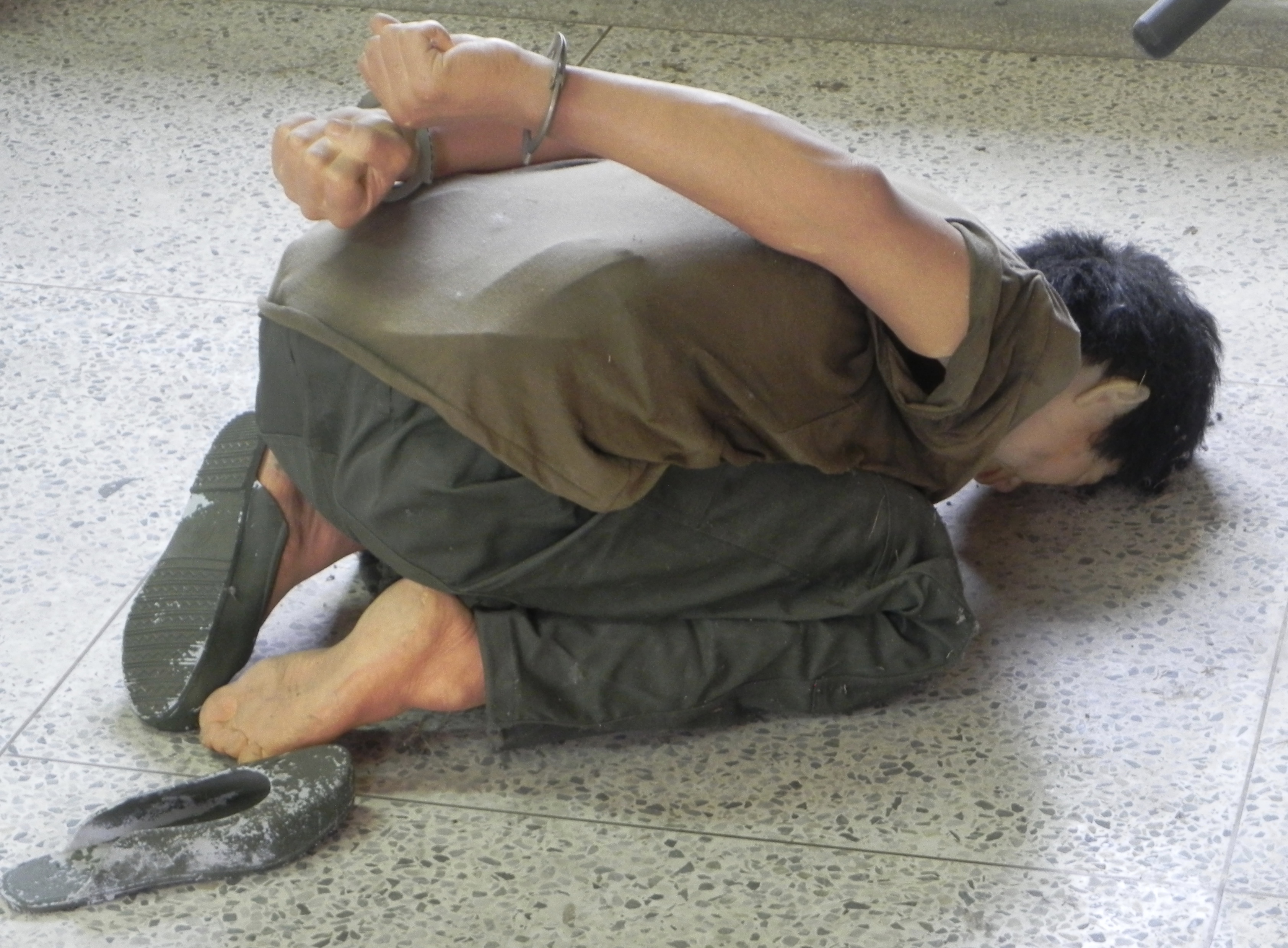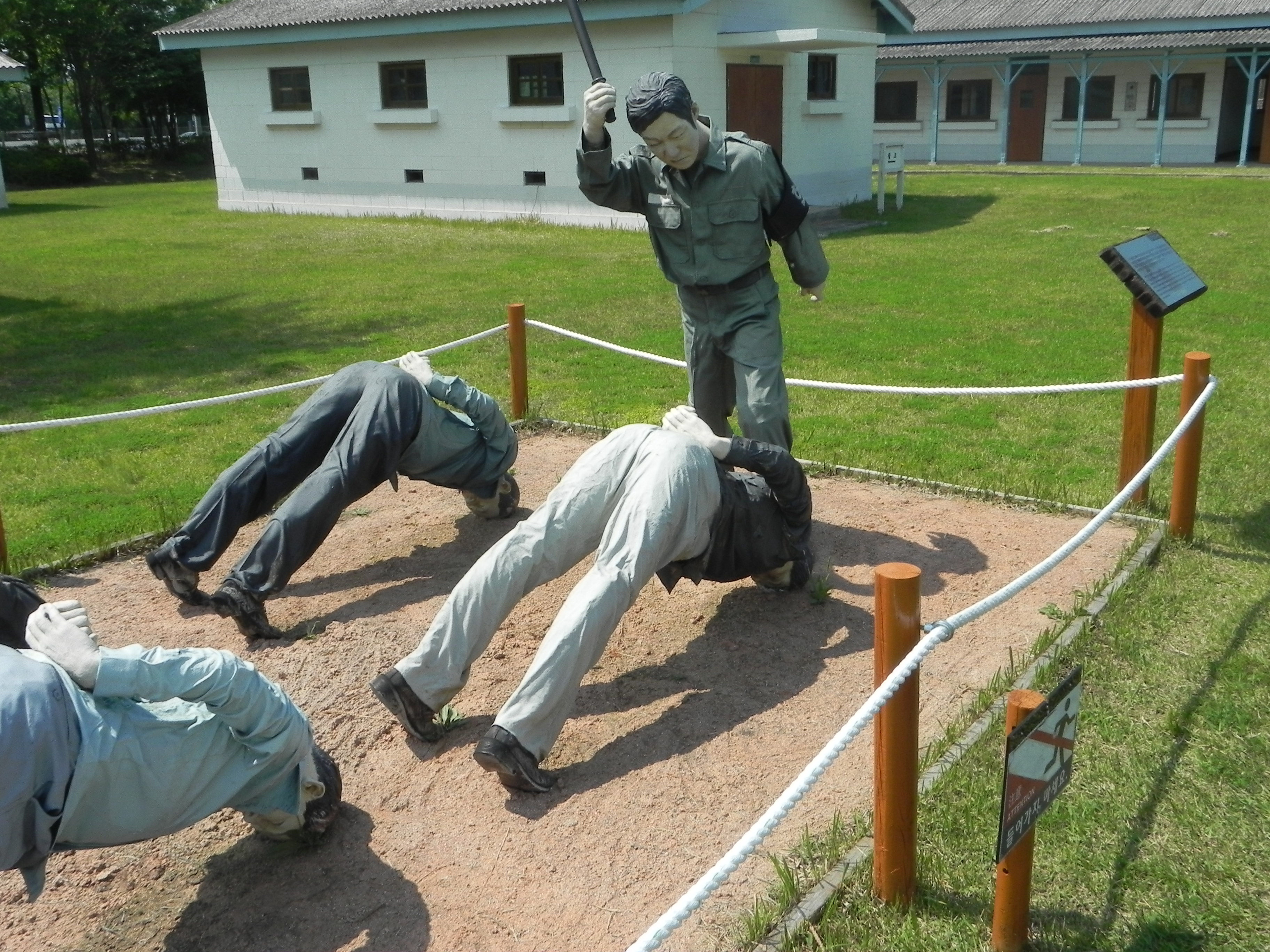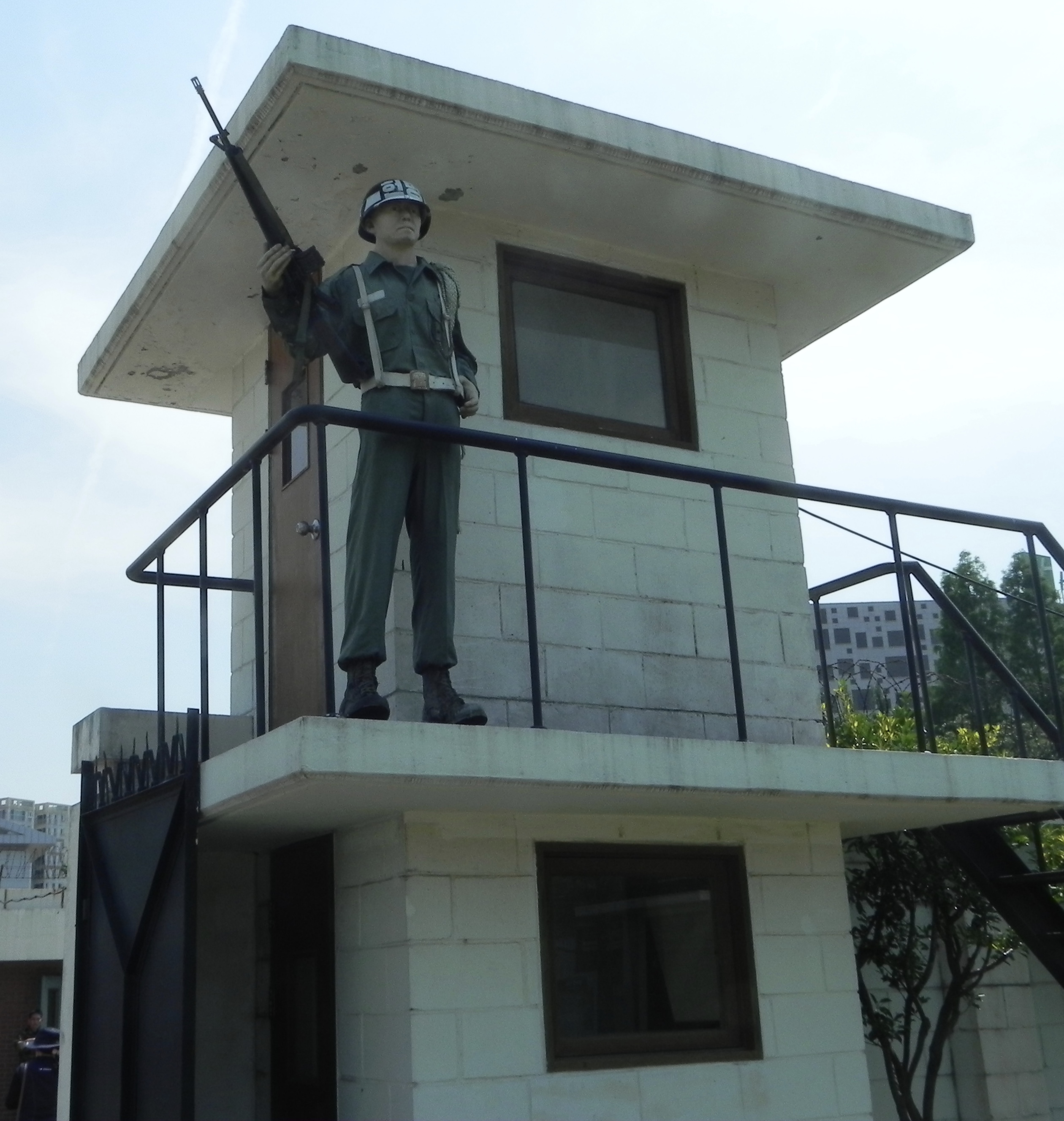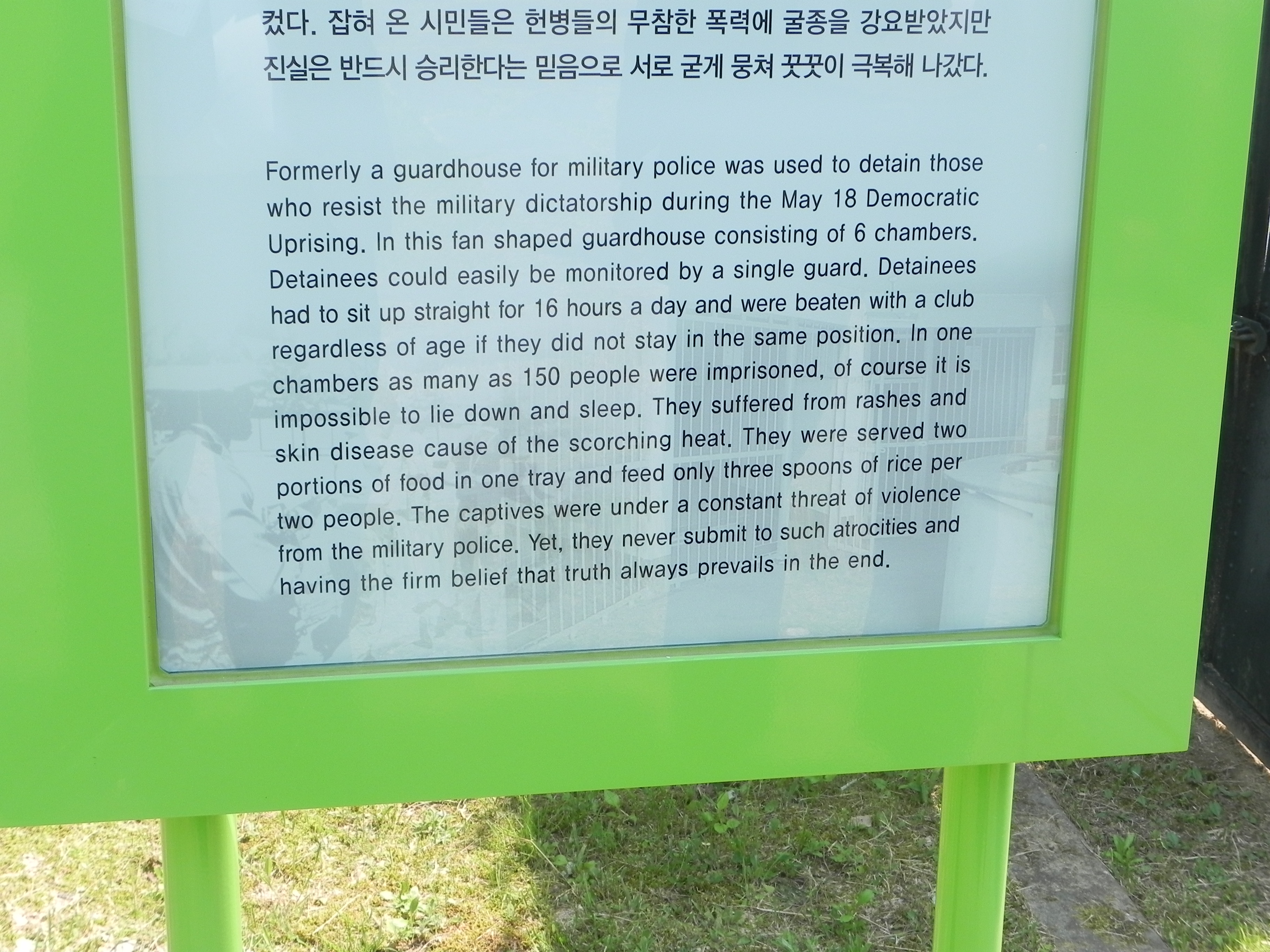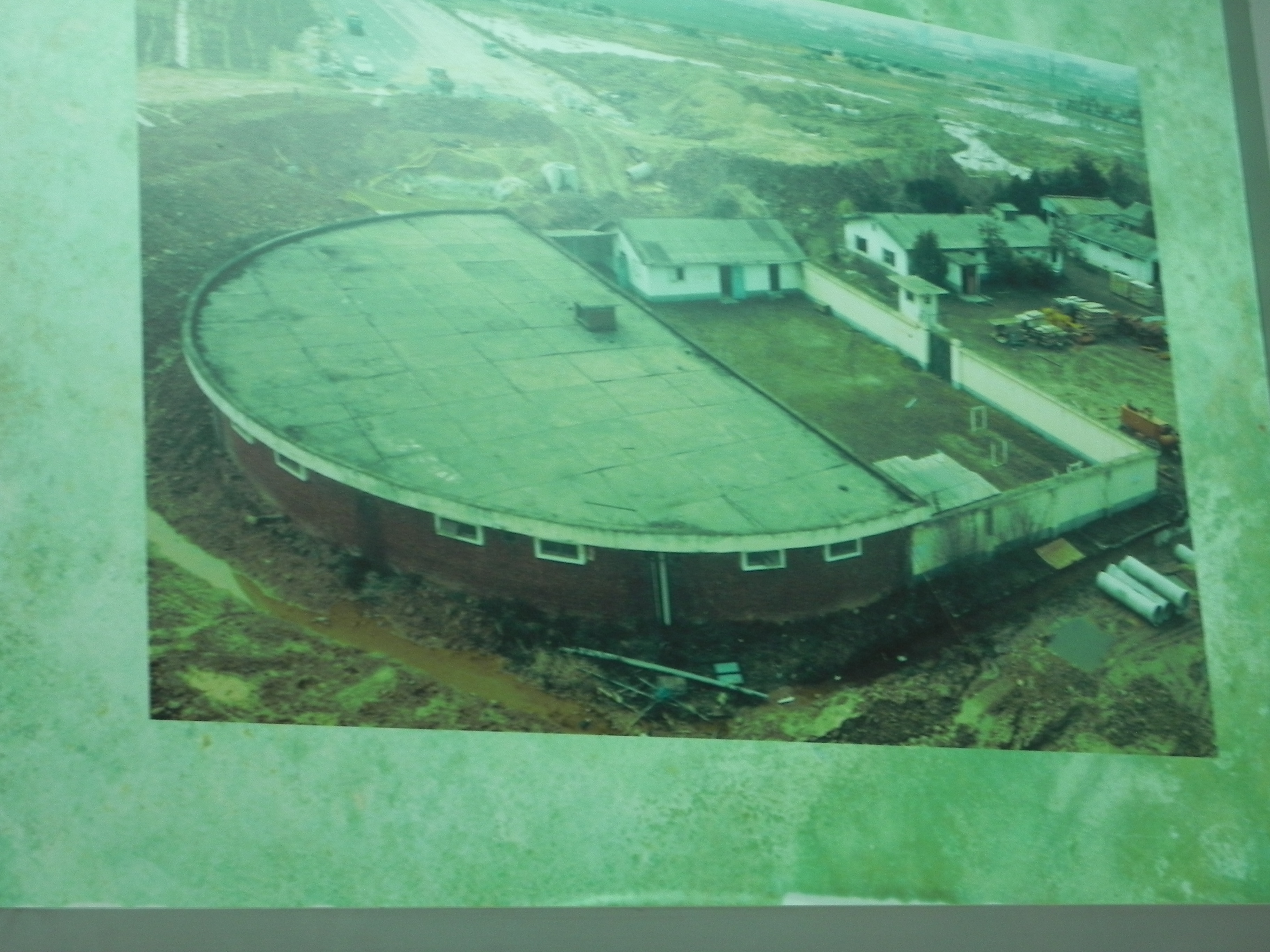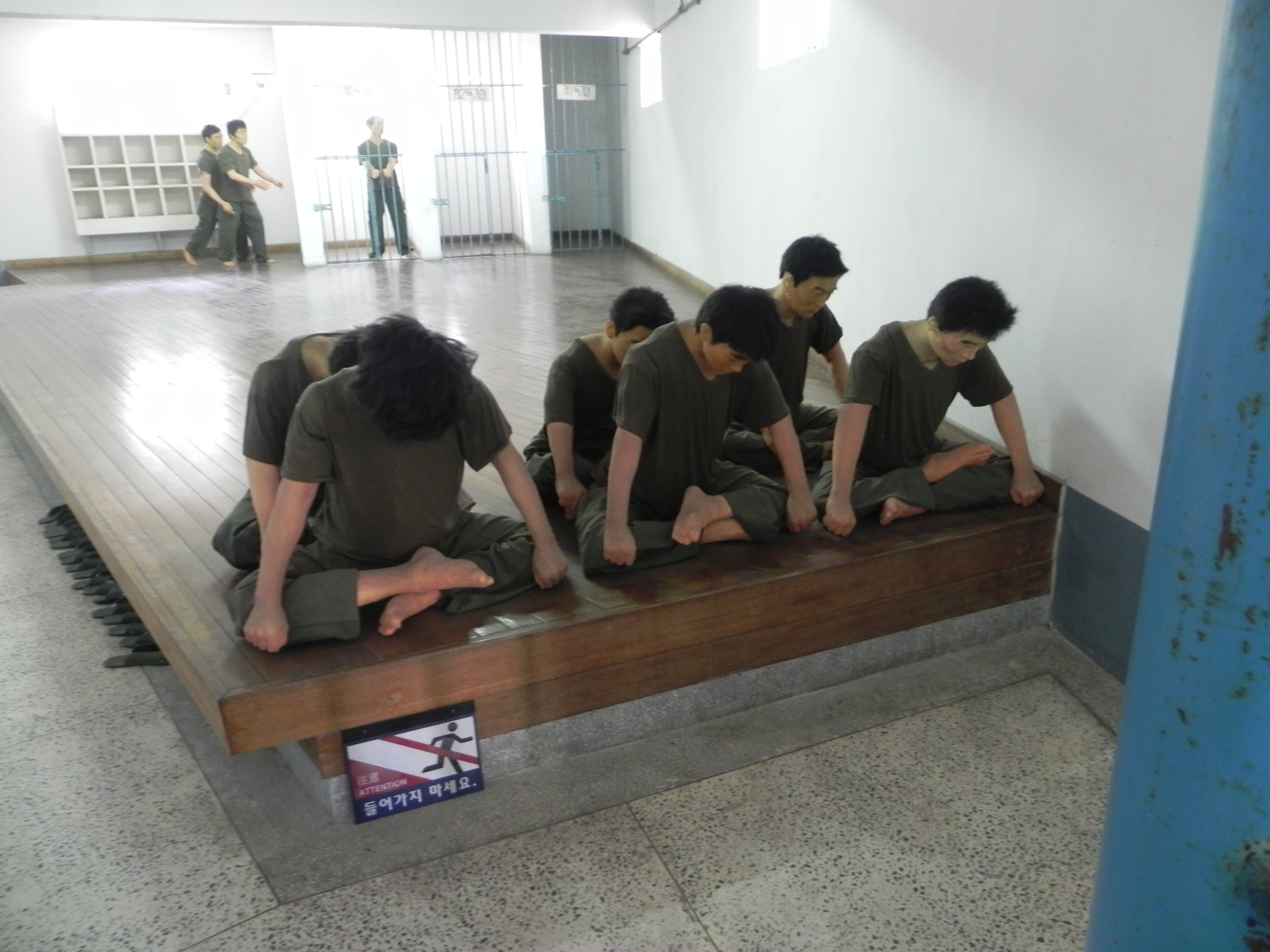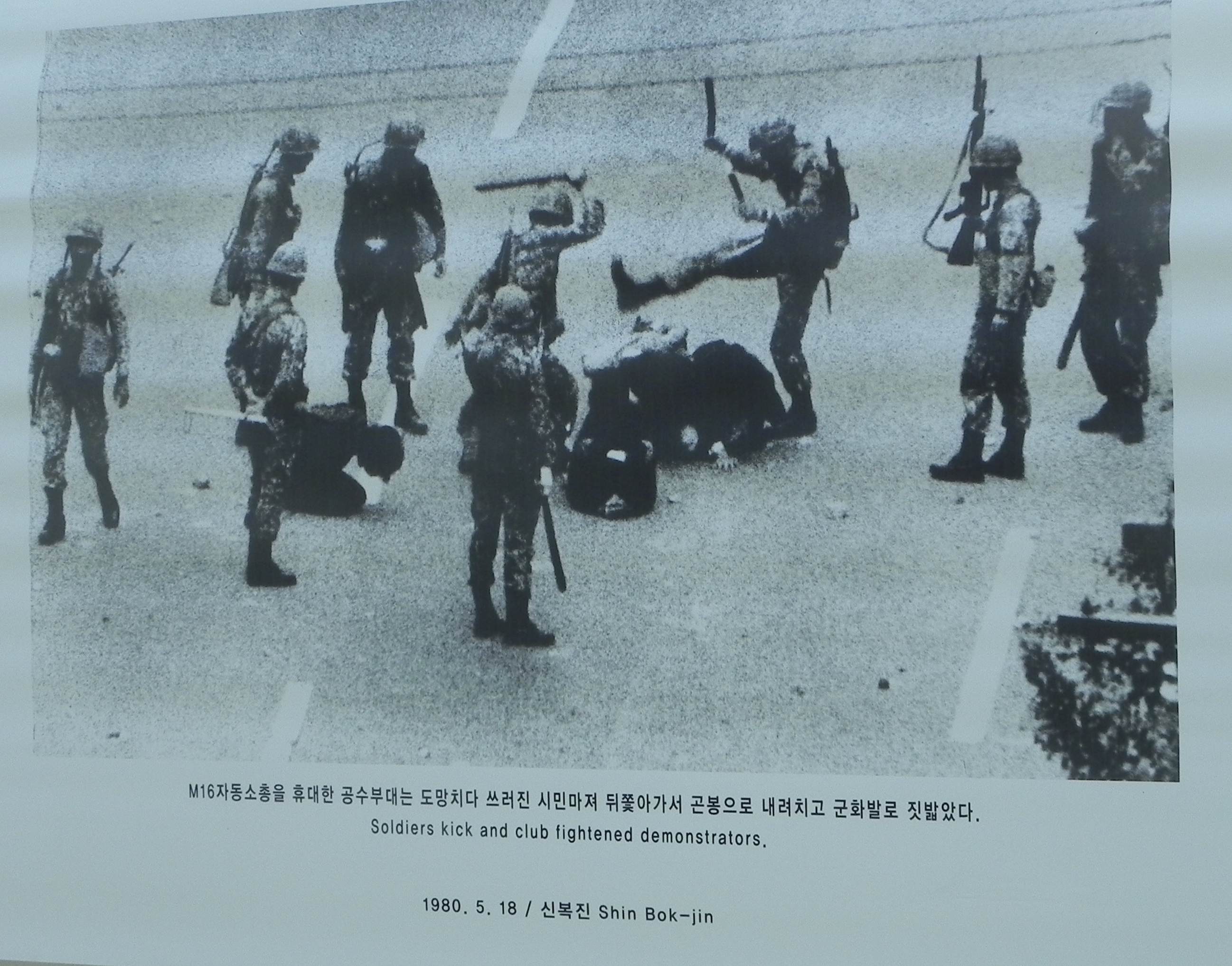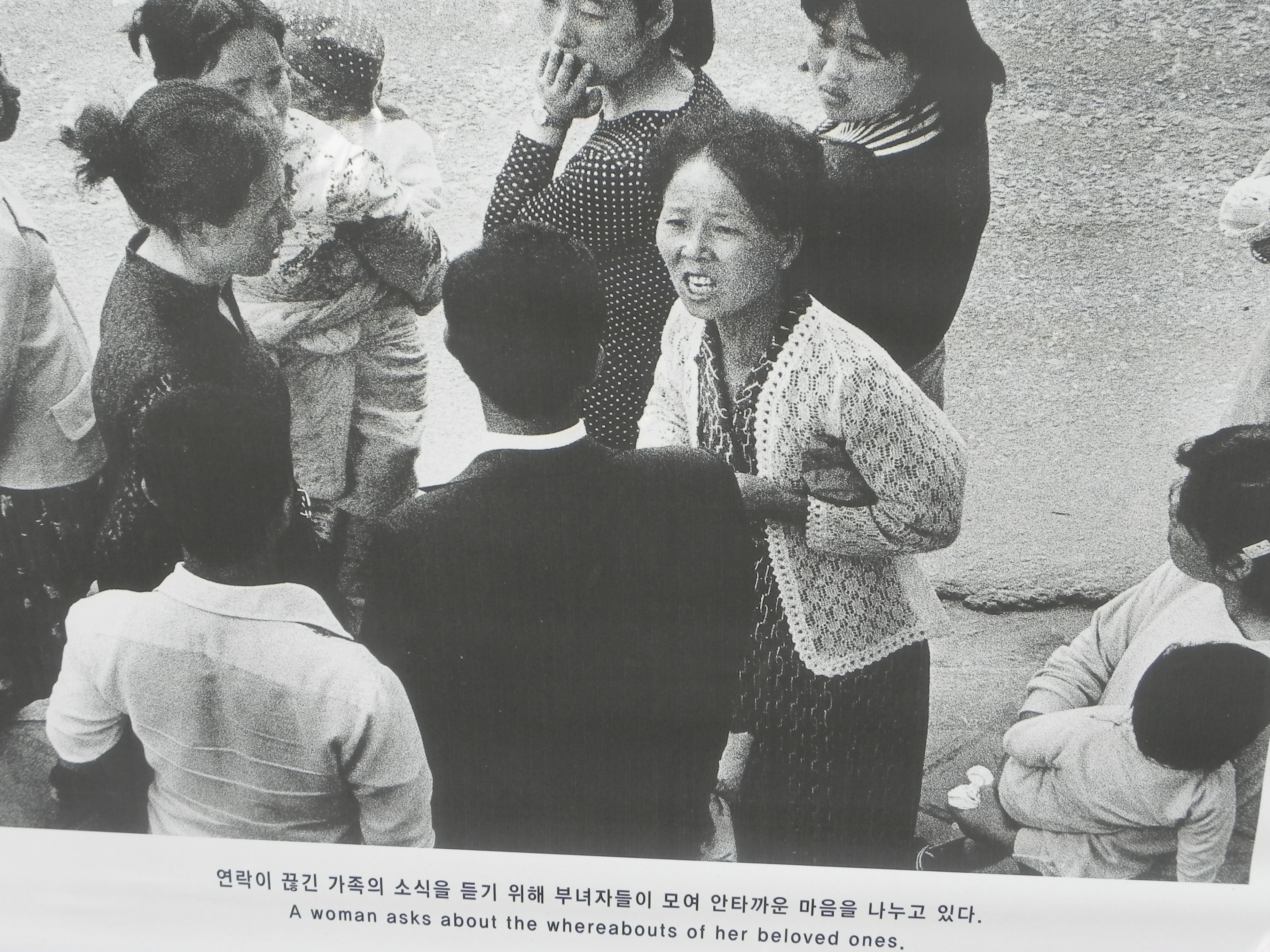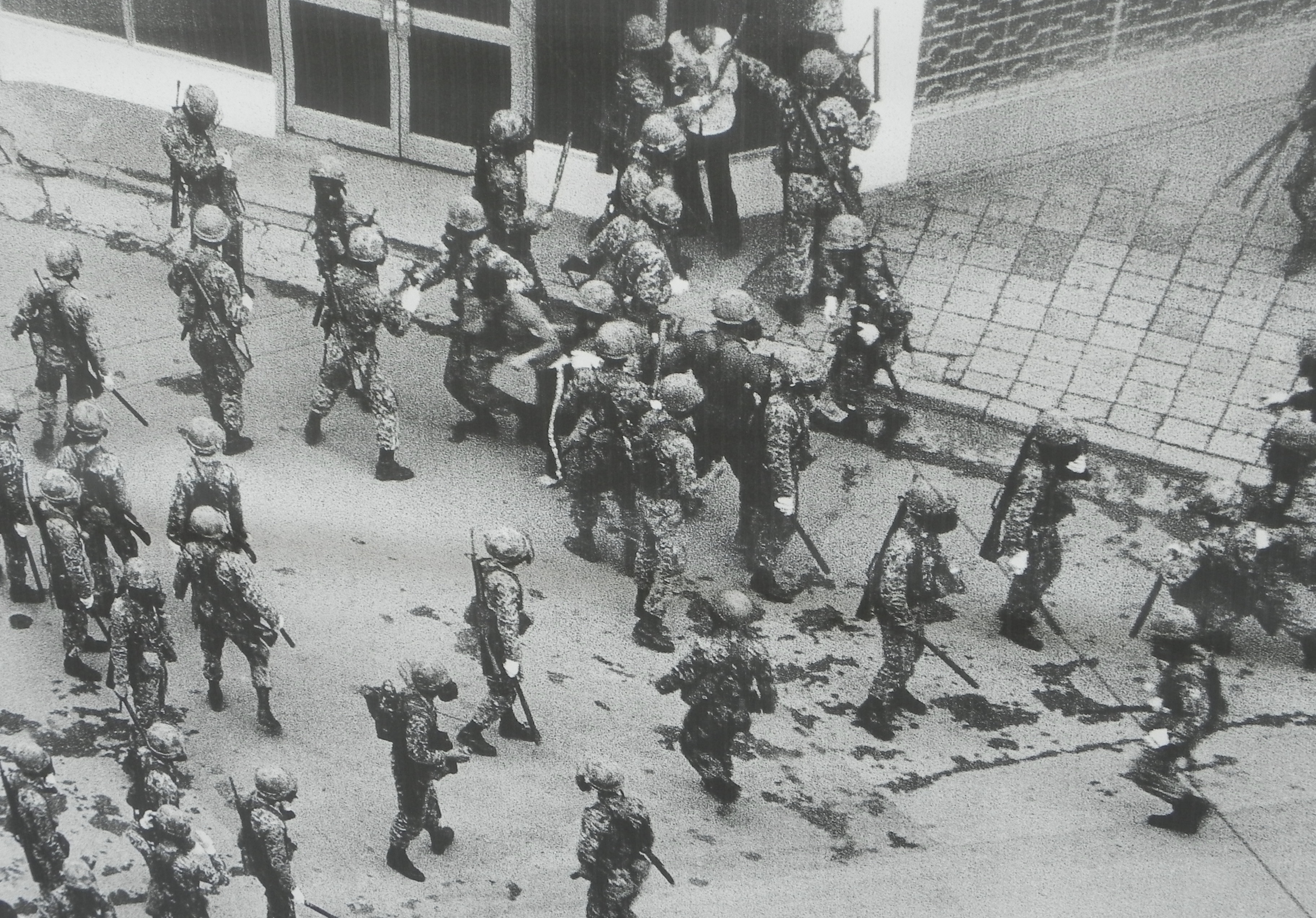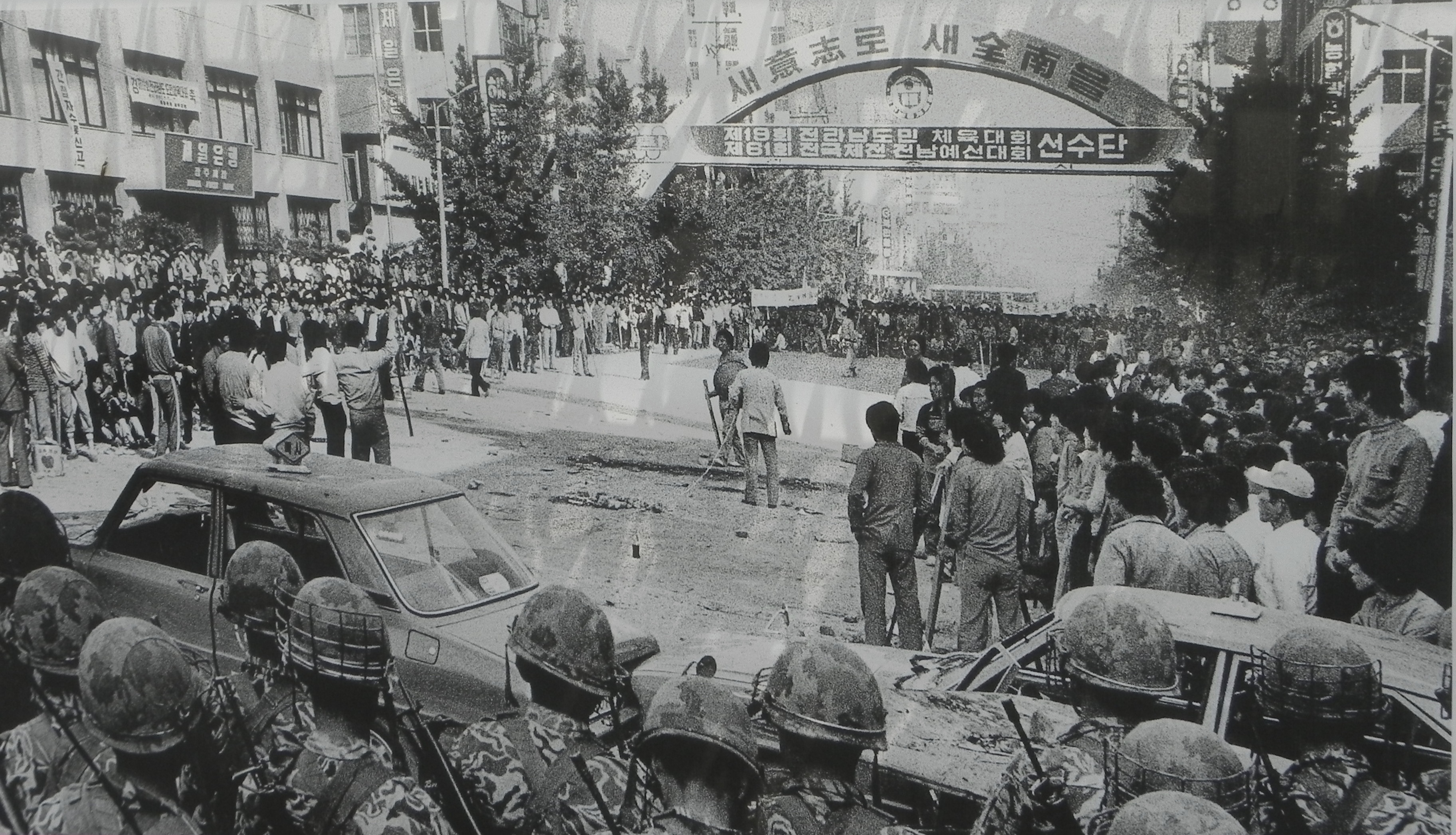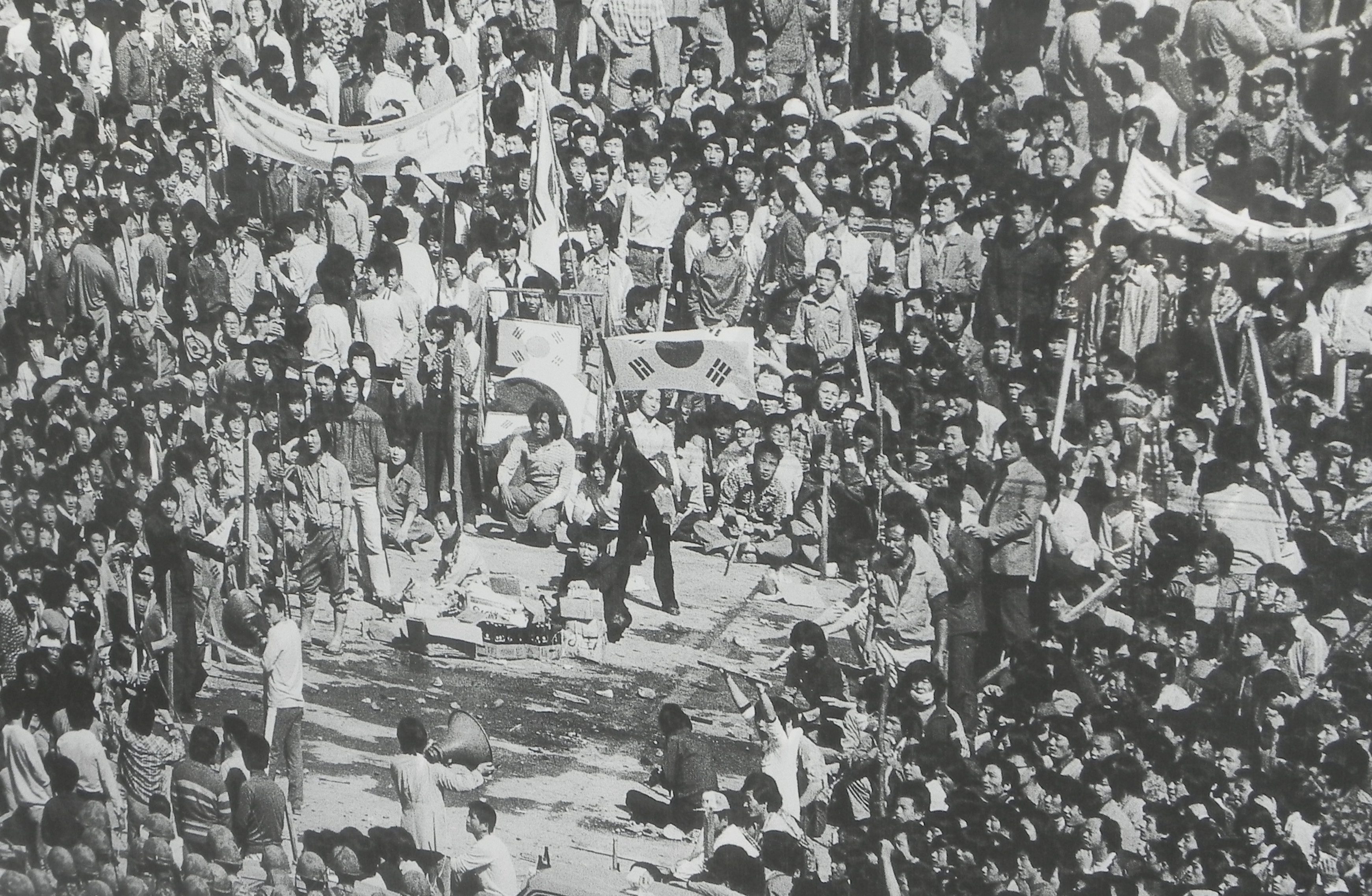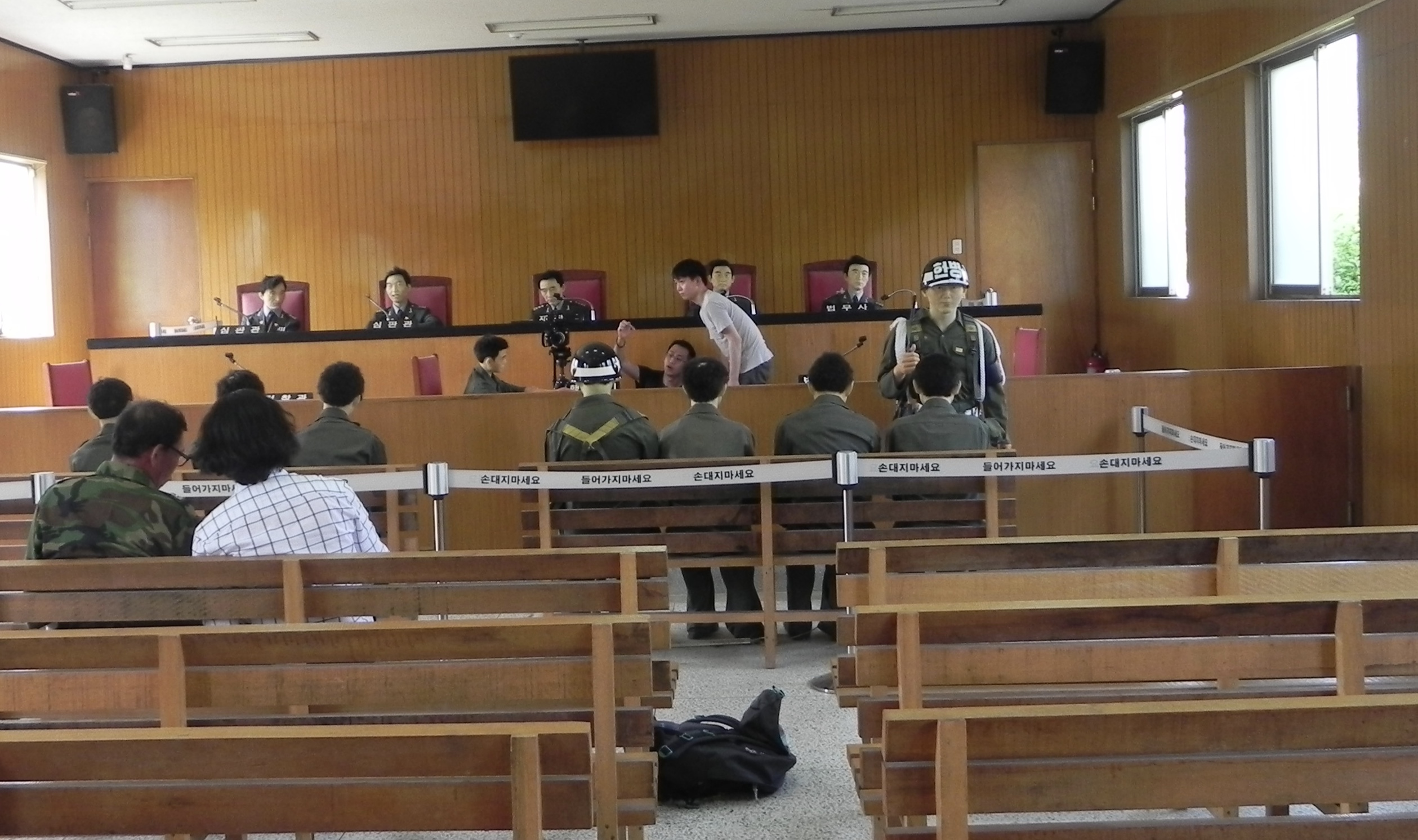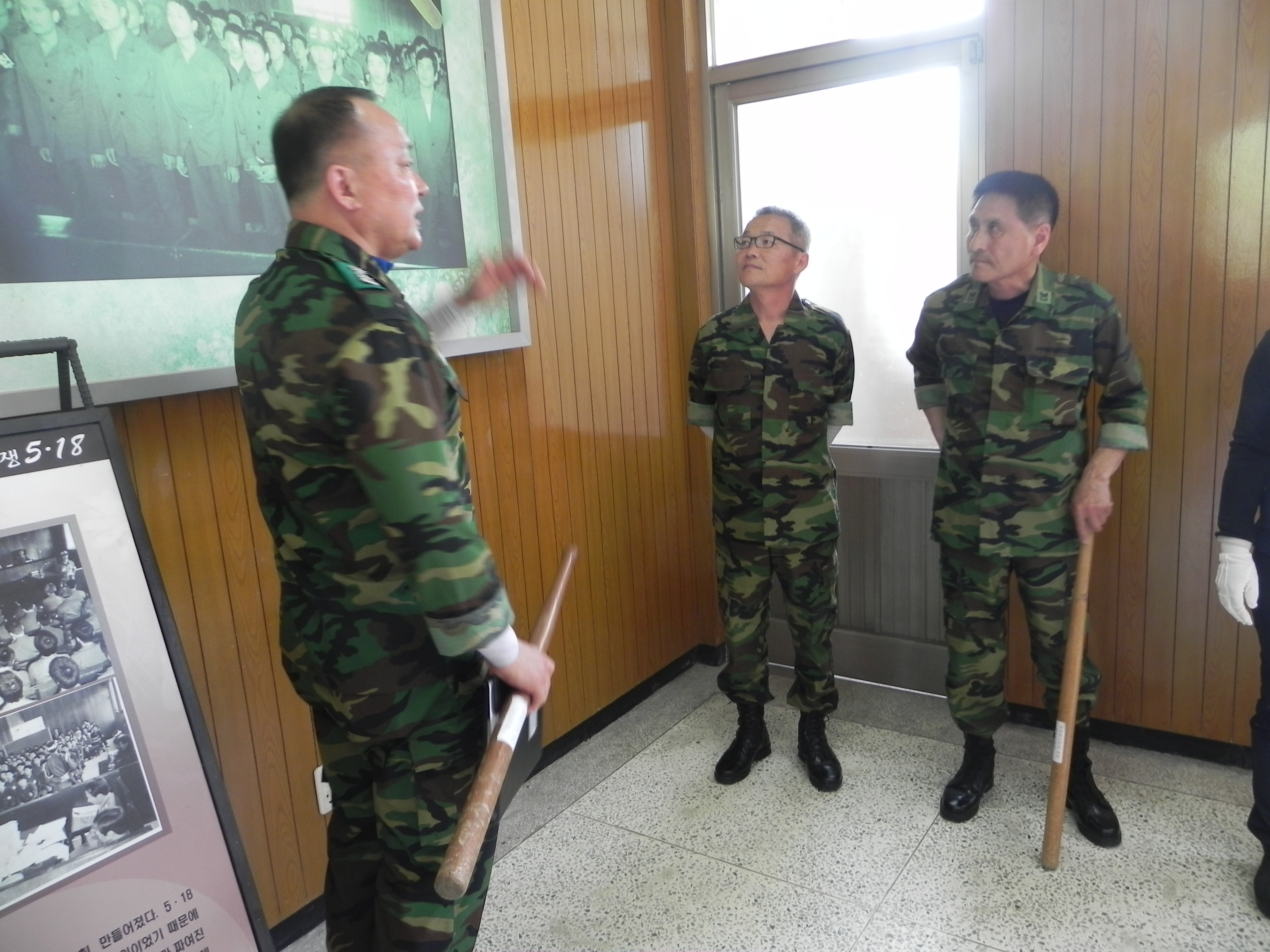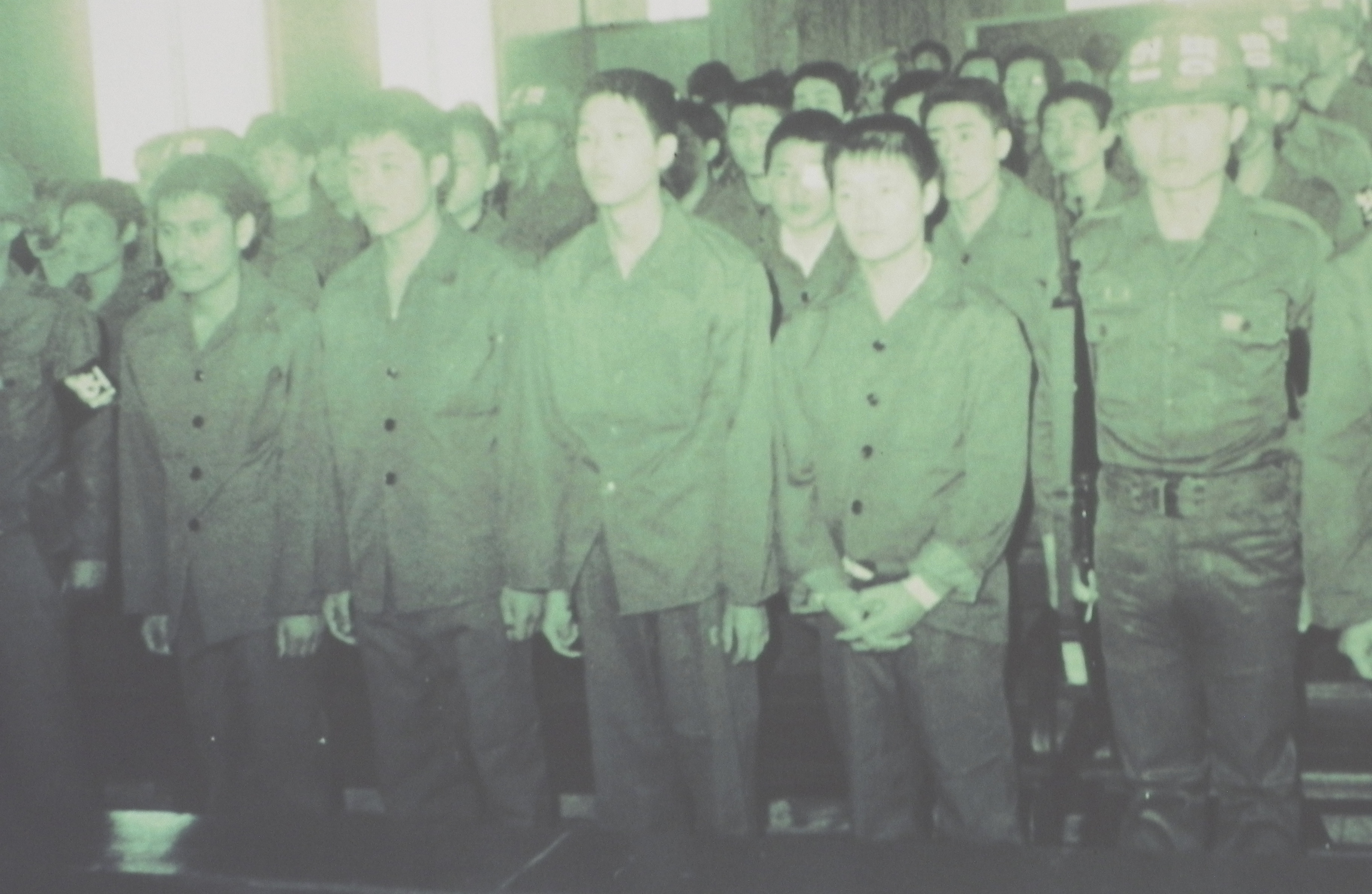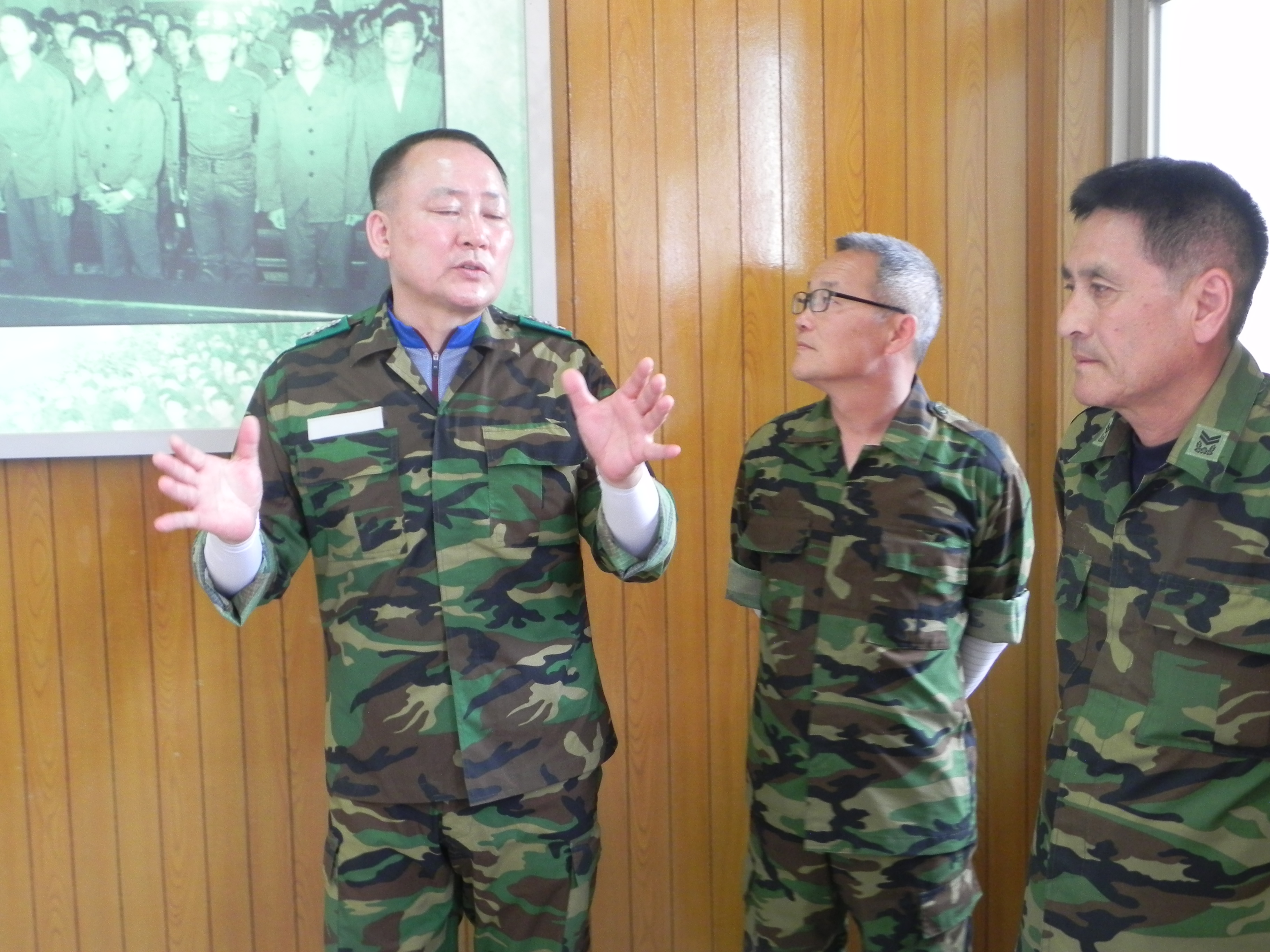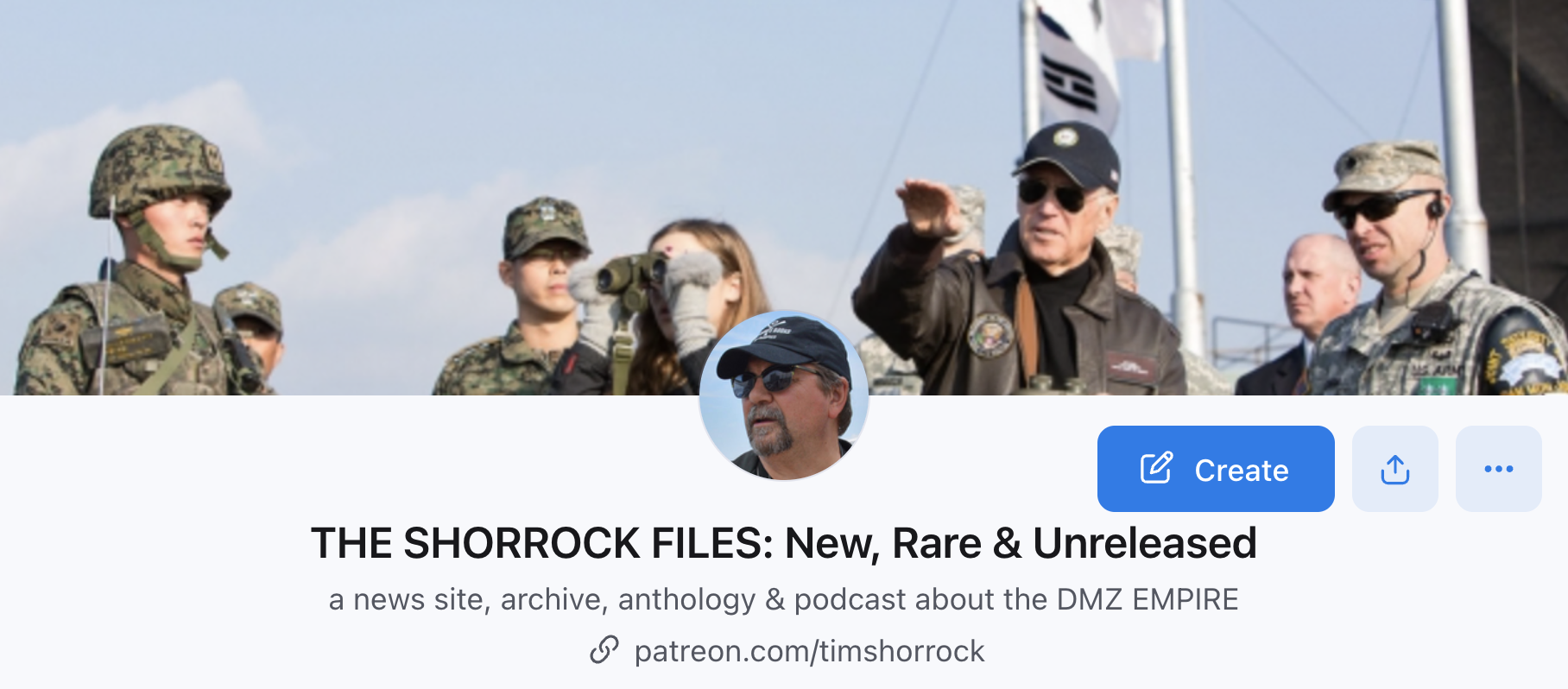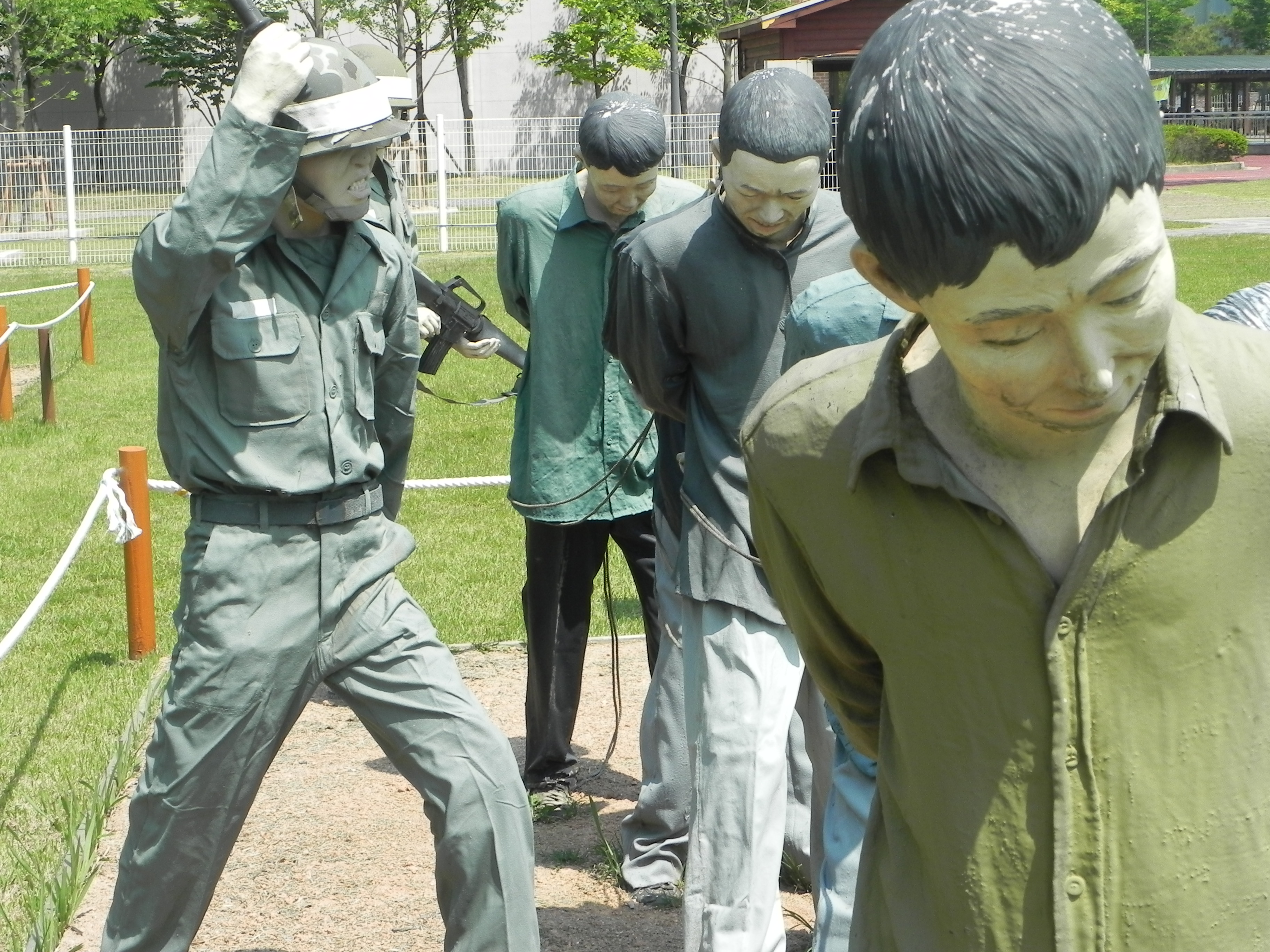
I spent most of the last three weeks in South Korea, primarily in Gwangju, Jeju and Seoul. I was invited to Gwangju by the city, along with three American journalists who witnessed the uprising and the final military takeover on May 27, 1980.
On our last day there, we visited a replica of a military prison that was used during and after the uprising. Hundreds of young Koreans who had demonstrated and fought for their democracy were sent here, where they were tortured, placed in extreme stress positions, and beaten before being tried in military courts where General Chun’s martial law commanders acted as judge, prosecutor and jury.
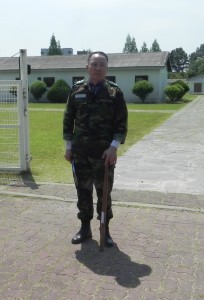
Some 3,000 young people from Gwangju went through this prison, including my friend Lee Jae-Eui, one of the leaders of the uprising and the author of Kwangju Diary, a famous account of the events that took place in May 1980 (and sadly out of print). Our guides were three men who survived the prison. They were led by Lee Dong Gye, the man in this picture who led the tour. One of his comrades, the man in the far right in the courtroom picture, can be seen in the old photo of defendants at one of the mass trials; he’s the man with the mustache at the far left. Interspersed are photographs from the events themselves, showing the incredible brutality displayed by the paratroopers sent by General Chun Doo Hwan to Gwangju (incredibly, he denied recently that he had anything to do with this decision, which he was convicted for in the 1990s; he was later pardoned by President Kim Young Sam, at the request of the great dissident leader and president Kim Dae Jung, the man Chun almost killed).
Strangely, the prison is located just a short walk from the Holiday Inn hotel where we stayed in Gwangju. As I walked through, I couldn’t help but remember how the U.S. ambassador at the time, William Gleysteen, once told me how relieved he and other U.S. officials were when the South Korean Army retook the city; in contrast to the paratroopers who did most of the killing in the opening days of the uprising, he said, the regular army troops acted with “restraint.” Well, if this is “restraint,” black is white and war is peace.
Our guides had great dignity and only mentioned the U.S. role when asked about it. Prompted by one of the visitors, Mr. Lee angrily recalled how U.S. General John Wickham, who was the U.S. Commander in Chief in Korea during Gwangju, said at the time that “Koreans are like lemmings,” meaning that they’ll follow any military strongman, no matter what. He let that arrogant remark sink in as we contemplated their terrible treatment at the prison. “That was a definite humiliation of the Korean people,” he finally said.
Indeed. I applaud Gwangju for keeping this prison intact and showing it to the world. Click here for a short film from MBC in Korea (in Korean) showing how the prison serves as a lesson to Koreans to never allow this to happen again. The final photo is the celebration on May 17 on the street where the great battles of Gwangju took place in 1980 – “Gwangju Eve” this event is called. Although there is still division in South Korea about the legacy of Gwangju, you can see that the people of this city are proud of their revolutionary heritage, and will never give up their struggle for full democracy and accountability in South Korea.
During the Gwangju Uprising, 165 people were killed, 3,139 were wounded, and 76 went missing. Many South Koreans believe the totals were much higher, and could have reached over 1,000 killed.
